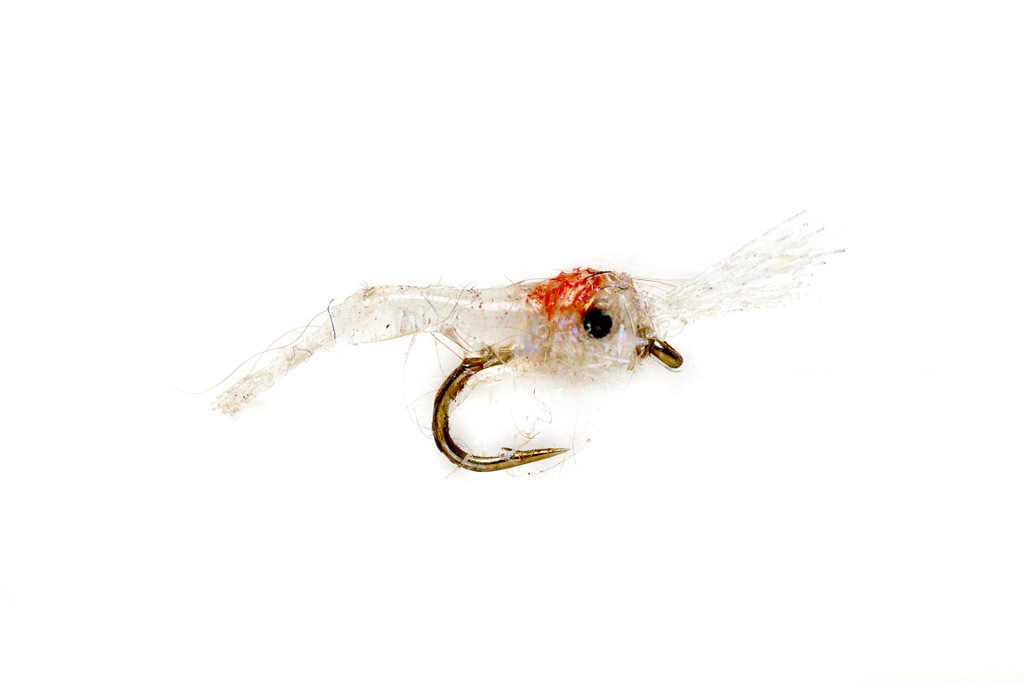Mysis Shrimp Fly Pattern
Have you heard of the mysis shrimp fly pattern? If you're a fly fishing enthusiast, you've likely come across this pattern before. But what makes it so popular? Let's dive deeper into this fly pattern and explore its effectiveness.
The Pain Points of Mysis Shrimp Fly Pattern
One of the biggest pain points related to the mysis shrimp fly pattern is the difficulty in tying the pattern. For beginners, it can be intimidating to take on this fly pattern due to its intricate design. Additionally, the pattern can be quite costly to purchase from fly shops. For these reasons, many anglers may shy away from fishing with the mysis shrimp fly pattern.
The Target of Mysis Shrimp Fly Pattern
The mysis shrimp fly pattern is primarily targeted towards trout in freshwater streams and rivers. This small crustacean is a common food source for trout, making it an effective pattern to use while fly fishing.
Summary of Mysis Shrimp Fly Pattern
The mysis shrimp fly pattern is a popular and effective fly pattern for freshwater trout fishing. While it can be difficult to tie, its effectiveness as a trout food source makes it a valuable addition to any angler's fly box. Let's explore this pattern more in-depth.
Mysis Shrimp Fly Pattern: How It Works
My personal experience of using the mysis shrimp fly pattern was when I was fishing in the Great Lakes region. Trout were readily feeding on this small, translucent crustacean, and I knew I had to try the pattern. The first thing I noticed about the mysis shrimp fly pattern is that it is tied to imitate the color and size of the real mysis shrimp. This tiny shrimp has a translucent white color, and the fly pattern does an excellent job of emulating this.

Additionally, the mysis shrimp fly pattern is tied with a high degree of detail and accuracy. The epoxy coating used in some variants of the pattern gives it a realistic, bait-like appearance underwater. It's no wonder why so many anglers turn to this fly pattern to catch trout.
Why You Should Try Using Mysis Shrimp Fly Pattern
Aside from its effectiveness as a trout food source, the mysis shrimp fly pattern can also be used in a variety of fishing conditions. In clearer water, the translucence of the pattern can make it more appealing to fish, while in murkier water, the epoxy coating can help it stand out. This versatility means that you can use the mysis shrimp fly pattern in a variety of fishing situations.
Tips for Using Mysis Shrimp Fly Pattern
When fishing with the mysis shrimp fly pattern, it's important to note that trout will often be feeding near the bottom of the stream or river. As such, using a weighted version of the pattern can be more effective. Additionally, be sure to match the size of the mysis shrimp in the stream you are fishing, as size can vary depending on the location.
Conclusion of Mysis Shrimp Fly Pattern
The mysis shrimp fly pattern is a highly effective pattern for freshwater trout fishing. While it can be challenging to tie, its ability to mimic the appearance of the real mysis shrimp, as well as its versatility in different fishing conditions, make it a valuable pattern to have in your fly collection. Give the mysis shrimp fly pattern a try on your next fishing excursion, and see just how effective this pattern can be.
Question and Answer: Mysis Shrimp Fly Pattern
Q: How do you tie a mysis shrimp fly pattern?
A: There are many different variations of the mysis shrimp fly pattern. Some popular materials used to tie the pattern include white or cream-colored thread, white or cream dubbing, and white or cream colored hackle. The pattern is known for being intricate and difficult to tie, making it helpful for beginners to seek guidance or watch instructional videos before trying to tie the pattern themselves.
Q: When is the best time to fish with a mysis shrimp fly pattern?
A: The best time to fish with a mysis shrimp fly pattern is typically during the winter months, as this is when mysis shrimp are most active and abundant in many freshwater streams and rivers. However, the pattern can be effective throughout the year in different fishing conditions.
Q: How do I know if mysis shrimp are present in the stream or river I'm fishing in?
A: One way to confirm the presence of mysis shrimp is to look for their translucent shells near the stream or river's shoreline. Trout feeding on mysis shrimp may also give away their presence, so be sure to keep an eye out for fish activity near the surface of the water.
Q: Can I use a mysis shrimp fly pattern in saltwater fishing?
A: While the mysis shrimp is primarily found in freshwater streams and rivers, it is possible to use the mysis shrimp fly pattern in saltwater fishing as well. Some anglers have reported success using the pattern to catch bonefish and other saltwater species.
Gallery
How To Tie An Epoxy Mysis Shrimp | Fly Tying, Shrimp, Lizard

Photo Credit by: bing.com / mysis tying
Demystifying Mysis - Fly TyerFly Tyer
Photo Credit by: bing.com / mysis shrimp epoxy fly demystifying flytyer
Tim's Mysis Shrimp White S18 Fishing Fly | Nymphs | Fulling Mill

Photo Credit by: bing.com / shrimp mysis tim mill fulling fly group size fullingmill
Demystifying Mysis - Fly TyerFly Tyer
Photo Credit by: bing.com / mysis shrimp demystifying lakes great fly hatch match flytyer
Mysis Shrimp, White - Nymph Fly
Photo Credit by: bing.com / mysis nymph nymphs